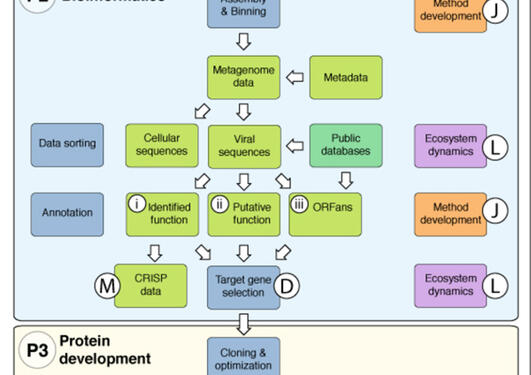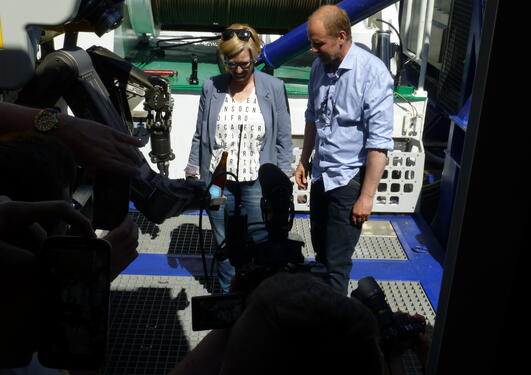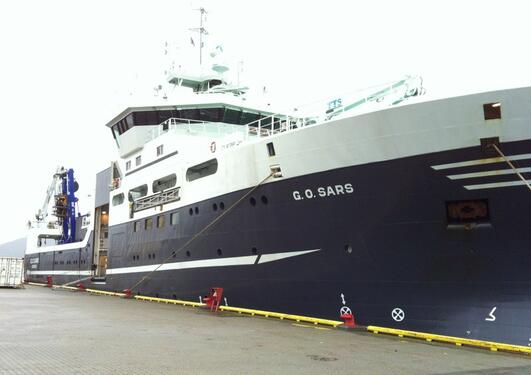2016 Summer Cruise
It is that time again. The R.V. G.O. Sars, the ROV Ægir, the AUV Hugin and masses of other equipment and metal cases are primed to go to sea once more.

Hovedinnhold
There will be 2 main parts or “Legs” to this summer’s cruise. In addition to on-going geological goals including data collection and various sampling activities, Leg 1 will focus on the macro-biological activity relating to the new EU project SponGES. Leg 2 will include activities relating to another new EU project, Virus-X. CGB researchers will also carry-out some activities for the Norwegian Petroleum Directorate.
Planning a Research Cruise
It is always something of a logistics nightmare to plan a research cruise. Ship-time is short and costly. Weather conditions are unpredictable; some equipment is more tolerant of inclement conditions than others. Sampling gear is often complicated, state-of-the-art and relatively untested, or over tested (!) and past its “use by” date. Everything must be packed on board; all eventualities planned for as CGB cruises are generally several days steaming from the mainland and extra parts. The cruise leader has to have plans on multiple levels, so that if weather conditions or equipment problems jeopardise one plan, another can be rapidly set in motion.
Professor Rolf Birger Pedersen has been cruise leader on many successful scientific expeditions over the past several decades. He is well-practised at juggling multiple research needs as well as at pushing the envelope of the latest technology advances.
2016 Locations
This summer the G.O. Sars heads back to Loki’s Castle, the first black smoker vent field CGB discovered in 2008. They also plan to sample more extensively at the seamount location to the north of Loki, the Schultz Massive. The top of this seamount is buried in several meters of sponge skeleton debris – a tempting research location for the SponGES project.
This ship will also return to the site of the latest hydrothermal vent find from summer 2015. Discovered at the very end of last summer’s cruise, researchers hope to have time this year to undertake activities to characterise the venting activity taking place at this location including the flora and fauna around it.
The Jan Mayen vent fields are also on this year’s agenda. In Leg 2 Researcher Ida Helene Steen explains that they will collect incubators that have been set out previously, and set out new ones. Learn more about this activity. They also plan to undertake some coring activity to learn more about the geochemical environmental conditions around the incubators.
Finally, the G.O. Sars will head north from Loki’s Castle, along the Knipovich Ridge to map this relatively unexplored part of the Arctic Mid-Ocean Ridge, and perhaps find new examples of venting activity.



